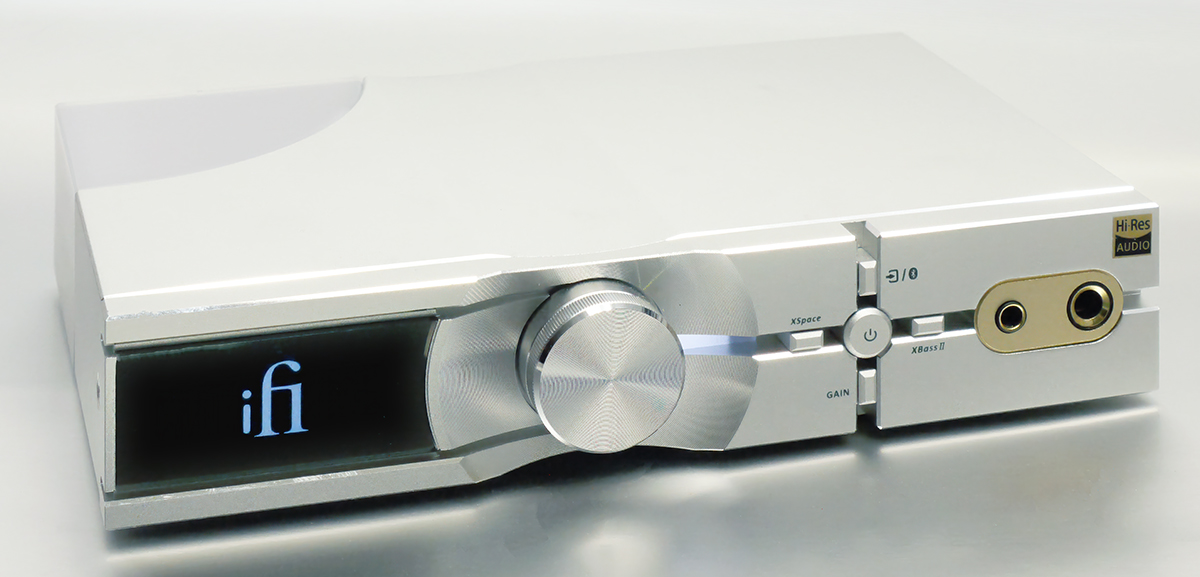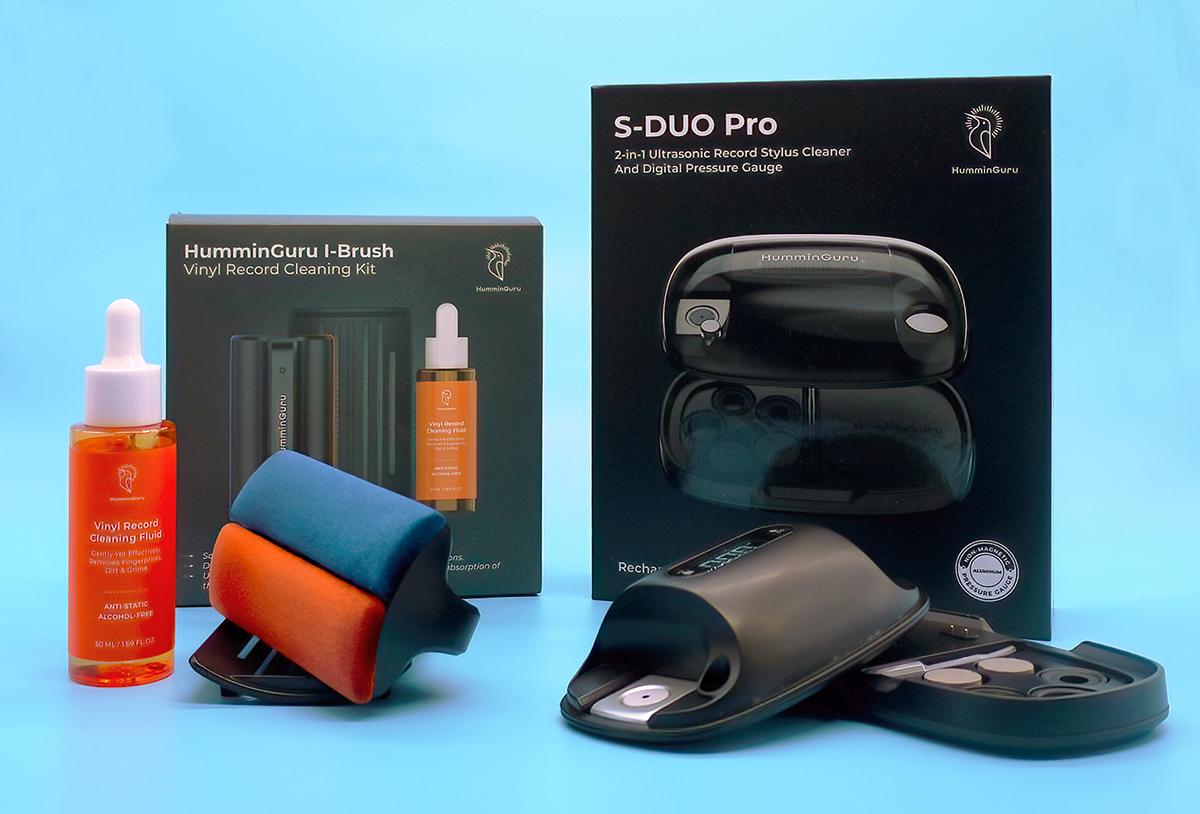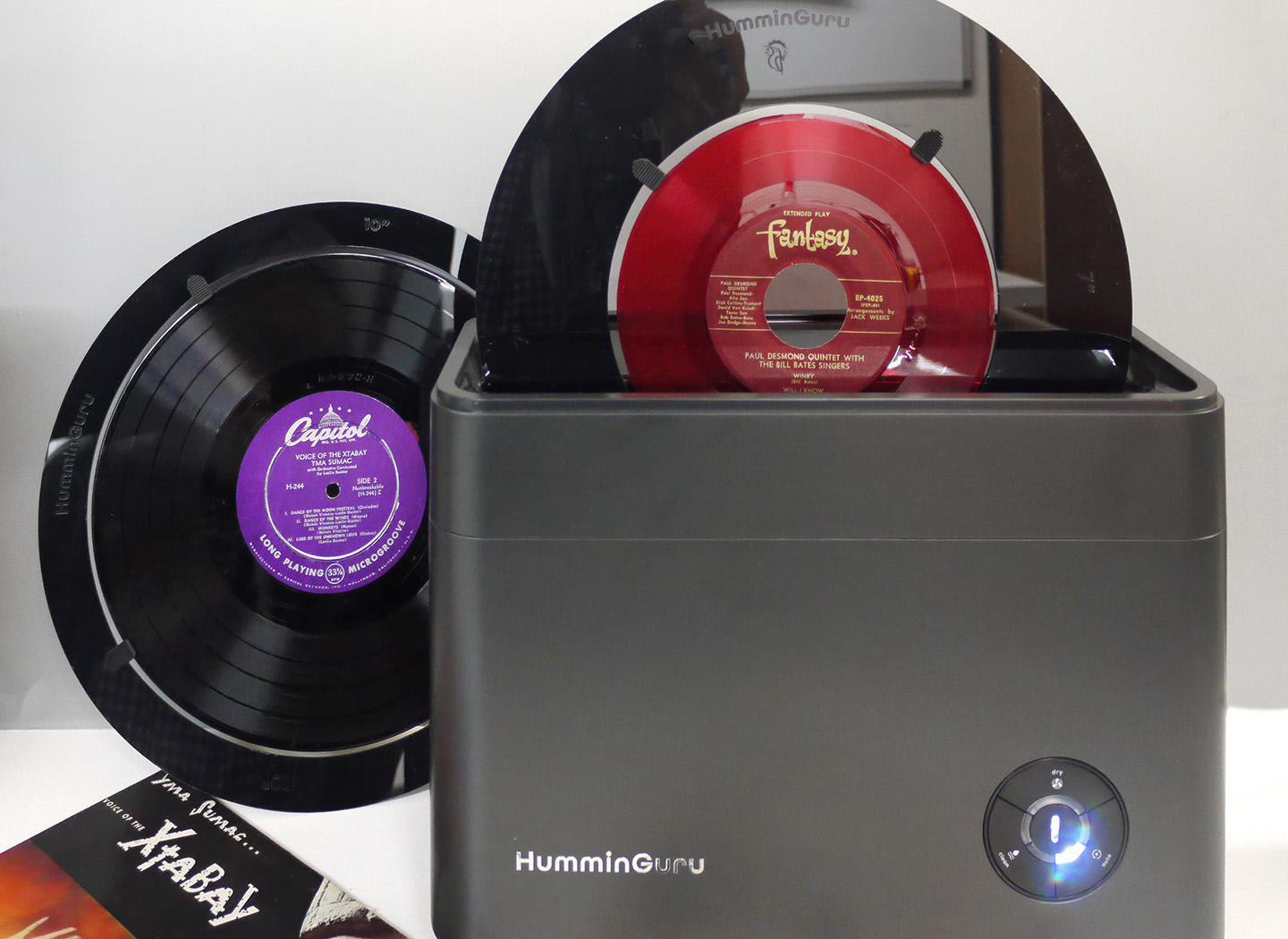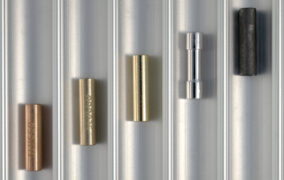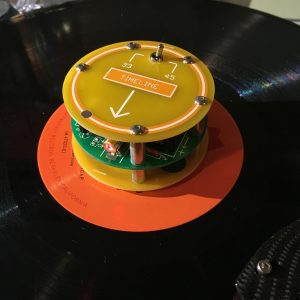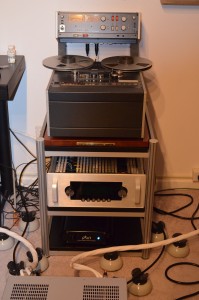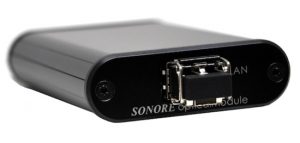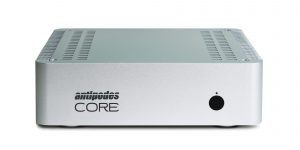Hey Kids! It's 2021, and with no more pressure to have the US BeBest, let's all go play with the USBe Perfect!
When the call came in, Georgia area code—caller unknown, I let it go straight to voicemail. Finally weeding out spam calls, I found—tucked between a Police Defense Fund plea and a faux breast cancer scam—one Walter Liederman asking would I like to audition a Core Power Technologies USBe Perfect USB enhancer?
We'd never met, but he had my contact info because I'd purchased several items from him going back to when he was "[email protected]" on Audiogon. Most recently it was a compact Core Power Technologies Deep=Core 1800 AC conditioner that allowed me to squeeze a Roon Nucleus into my video system cabinet while isolated from everything else. Walter now lives in Hawaii, but still has his Georgia-based cell phone and warehouse for shipping (plus the vintage collectible aol.com account). He's old school, audiophile savvy, with an ear for quality, an eye for value, and an appreciation the economic efficiency of house brands. He has recently taken a couple of design / manufacturing firms under the Underwood beach umbrella. Thus the Core Power Technologies brand expands from power conditioners to cables and now electronics—of which the little USBe Perfect was the first. And he apparently does all this from his lanai; R&D, production, warehousing, and shipping are mainland based (some mainland somewhere). And guess what? Underwood HiFi was perfectly positioned online for pandemic purchasing patterns.
Meanwhile, I'd barely finished an evaluation of four alternate-technology USB cables (HERE) when an audiophile friend emailed me convinced all "properly designed" USB cables had to sound alike—the signal "is just ones and zeros" argument—which meant all four were probably "poorly designed overpriced audiophile crap." Hardly. I reminded him that 'twas he who had recommended I try the Audioquest Jitterbug way back when, prima facie evidence that something wrong with USB audio could be fixed. The four cable designers had intentionally sought alternatives to the "proper design" of computer-oriented USB cables to get better—or at least different—audio reproduction. Different enough that I was able to mix-and-match them to different system configurations. Cable A preferred for the tube amp, cable B for the solid state, cable C for speakers X, Cable D for DAC Y, and each cable cheaper than upgrading the associated gear. When I finally came up for air, it was for a deep breath, but I then purchased all four. (So what did you do with your stimulus checks?)
At first I declined Walter's offer. After all, Victor Chavira had just reviewed the USBe Perfect HERE . Then I reconsidered—Victor had concentrated on the benefits the USBe Perfect had brought to his AURALiC streaming setup, with no particular mention of the USB cable link. I was curious: how would the Core Power Technologies device function in other implementations? I had also just made two significant changes to my main system: fitting the Spatial Audio Hologram M4s with IsoAcoustics Gaia III footers, and feeding them with Silversmith Audio Fidelium ribbon speaker "cables," the combination noticeably increasing resolution. The USBe Perfect seemed like a perfect excuse to revisit my various cables and see what effect a USB gizmo had on the "poorly designed…crap." Would it work better or worse with this cable or that, and what would that indicate about the idiosyncratic designs? Synergy or sabotage? So it was that I soon received one in a small unmarked package, but no info or instructions. Checking with Walter, it turns out my review sample was inadvertently sent out without the usual instruction sheet.
Not a problem: it's just a small box of metal with a "male" USB A plug on one end and a "female" USB A socket on the other. No user controls, just a graphic indication on doing the old in-and-out should you need assistance. The plug height was perfect for sliding into my (older) MacBook Pro. My MacBook Air has those damn USB C ports, but the little Audioquest adapter accommodated it perfectly. More information is available on the Underwood website: note that the address silkscreened on the top-plate is now obsolete, to be updated on the next production run.
USBe Perfect? The very name implies that USB audio is not. Universal Serial Bus computer cables are bi-directional, so computer and peripheral can "communicate," error-check, and transfer bit-perfect data sent in packets so precise timing is not required. They also include a 5v circuit to power peripherals and confirm connections. USB was never intended for hi-res digital audio, which is typically real-time data transfer, no error-checking, meaning timing errors like jitter are problematic, and device clock precision is crucial. Sound quality? Perfecting the USB sow's ear has fallen to the audiophile silk purse community, just as had the "Perfect Sound Forever" CD back in the days. The USBe Perfect is the latest entry in the small product sector—pioneered by the aforementioned Jitterbug—known originally as "USB re-clockers." Later entries have added galvanic isolation, data regeneration, noise cancelation, and more-so the job description has expanded to "USB de-crapifiers."
I had tried several of them when my streaming platform was the MacBook Air; they worked, the sound quality improved, but never to my total satisfaction (and hence my Roon Nucleus / Sonore ultraRendu rig). Those early crap killers have all been discontinued or since upgraded—even the venerable Jitterbug now comes in a new full metal jacket version.
USB continues to bedevil high-end audio, even as DAC manufacturers and cable designers are busy devising their own fixes for the problems. The add-on kluges to deal with USB issues have also become more sophisticated—and expensive: the Innous PhoenixUSB checks in at $3499 USD for example. The USBe Perfect "lists" for $499, but in Walter's standard sale pricing strategy, the "real world" price is $299, slotting it in nicely between, say, the iFi iPurifier 3 ($129) and something like the Uptone Iso-Regen ($695 with LPS-1.2 power supply).
What's under the hood? According to the Underwood HiFi website, beyond jitter reduction the USBe Perfect circuitry includes a 5v DC to DC converter (I assume this means galvanic isolation), provides full USB signal regeneration, and "is designed to minimize signal degradation effects such as crosstalk and inter-symbol interference (ISI) that limits the interconnect distance between two devices." (It's optimized for 1-3m cables).
I have been using my Jitterbug with its stablemate Dragonfly Black 1.5 for casual and travel listening with headphones and IEMs from laptop, iPad, and iPhone—so I started by subbing in Walter's little black box. I'm not a headphone obsessive, but it only took about 20 seconds to realize the Jitterbug was going to be looking for a new dance partner. My Mr. Speakers / Dan Clark Aeon Flow cans were altogether livelier and more dimensional with the USBe Perfect. I relayed this to Walter, who sniffed that I should use his baby with a "better DAC" than the $99 Dragonfly. OK, so I chose the cheapest AQ option knowing I had a history of leaving chargers, IEMs, and the like in hotel rooms and airplane seat pockets (back when such was possible). But if you use a mini DAC/Amp, the USBe Perfect will likely find a happy home with it. One possible exception: Audioquest cautions that their Cobalt Fly may not work optimally with the new FMJ Bug due to duplicated technology, and this might also prove true with the USBe Perfect. Otherwise the only downsides are that the metal USBe Perfect is heavier (but still under an ounce) and bulkier than the plastic J-bug, and the battery drains faster; I use the Apple "Camera Adapter" with a parallel charging socket when I get on a Grateful Dead live concert binge.
But "Better DAC?" Sorry, that's where things get complicated, folks. My four non-kosher USB cables are all full-range, but sound quite different. While there are significant differences in sound staging, resolution, transient response, etc., the most obvious variable is overall timbral balance, or "voicing." The metaphors will surely offend the designers, but I'd thumbnail the Curious Cable Evolved as a lyric soprano, the Unique Innovation Technology Perfect Music Purifier USB as a lead tenor, the Mad Scientist as a resolute baritone, and the Phasure Lush^3 as a show-stopping basso. Cables as tone controls? Guilty as charged, given the variability of recorded sonics streaming High-Res audio makes all too obvious.
My "Better DAC" is a 5 year-old iFi micro iDAC2 DAC/Headphone Amp now usually tethered to the 27" iMac I use for digital imaging. Although marketed as a desktop DAC, it runs off the 5v USB circuit, and thus can be sensitive to noise—I originally bought the Jitterbug to use with it. Plugging the Aeons into the iFi, I cycled through my quartet of USB cables, using my old reliable Quboz playlist (HERE).
With the USBe Perfect isolating iMac from iFi, the cables breezed through the most challenging tracks. Letting the perfect be an enemy of the good just for once, the Core Power Technologies fix again KO'd the AQ: everything sounded less "digital;" it obviously removed more crap. Interestingly, it also managed to enhance respective strengths and mitigate shortcomings for the Curious, Mad Scientist, and Phasure cables, but such changes were much less evident with the UIT USB, which features a module incorporating its own noise reduction technology.
My "Best DAC" is a Chord Qutest, blissfully floating free of the AC courtesy of an Uptone Audio LPS 1.2 Ultra-capacitor power supply. The Qutest USB input is also "galvanically isolated with high speed RF digital isolators" according to designer Rob Watts on a Head-Fi.org post, who adds "moreover USB devices will not improve the isolation, but will actually degrade overall performance as overall system RF noise levels will increase due to the unnecessary circuitry being added."
Hmmmm. Let's find out, shall we?
The rest of my system includes the Roon Nucleus, hard-wired (Supra Cat 8 Ethernet) to the Sonore ultraRendu, the Bent Audio transformer-based passive preamp, the delightful Valvet 2se amplifier, and the so aptly named Spatial Audio Hologram M4 Triode Master loudspeakers. Interconnects and power cables are from UIT and Coincident Speaker Technology, speaker cables were the aforementioned (and quite remarkable) Silversmith Fidelium, power conditioning by Audience and iFi.
I started running my Qobuz test playlist from my Wi-Fi fed MacBook Air (on battery power) and while the benefits of the USBe Perfect were clearly audible, I quickly realized the laptop was no match for the hard-wired Sonore ultraRendu, so I switched to the higher resolution streaming system.
Direct from the ultraRendu the Curious Cable Evolved sounds ultra-detailed, full-range but with a slightly light balance, reminding me a much-loved time-aligned Thiel loudspeaker of yore. Ah, but running it through the USBe Perfect, the Curious Evolved sounded more spacious, ideally balanced and sensuously beguiling. Bring on the female vocals!
The Mad Scientist had the best top to bottom tonal balance in my original tests. With the Core Power box engaged, presentation was even richer, soundstage wider, and both bass and treble extension better defined. Yes, better with than without. Turns out Mad Scientist's "Enhancers? We don't need no stinking enhancers" stance is not absolute. Chief Mad Scientist Bob Prangnell had told me while I was preparing the original review that if a USB device were to be used, adding one at the source end (like the USBe Perfect) was preferable to products inserted at the DAC input.
The "user-configurable" Phasure Lush^3 was the bass, soundstage, and ambience champ in the original survey. With the Fideliums, those virtues remained, although the high treble could now sound a bit tizzy; adding the USBe Perfect brought the balance back and even seemed to further enlarge the amaze-your-friends soundstage. Phasure asserts their cables sound "analog," and there was virtually no digital glare through the Core Power Technologies widget. The Lush^3 remains my late night, kick-back-and-enjoy listening choice, but adding the USBe Perfect also probably warrants losing some more sleep experimenting with the 2000 or so configuration options this unique cable provides.
The UIT USB cable had emerged from the first test as my "Reviewer's Reference," the proprietary noise reduction module giving it a clear edge in resolution and dynamics, and it just sounded "right." Round two, with the Fidelium speaker cables, the UIT performed even better with the ultraRendu; if it was on the recording, the UIT laid it all out vividly. Reference standing confirmed. However, inserting the USBe Perfect seemed a step backwards / sideways, soundstage precision and overall "vitality" was reduced, but still lovely in a more languid fashion. I again suspect the serial "de-crapification" stages of the USBe Perfect and the Perfect Music Purifier module were head-bumping each other to a stalemate.
So this has been one long, deep dive into the digital divide inadequately bridged by the ubiquitous USB computer cable, and the potential of a small, rather affordable fix in the form of the USBe Perfect to shore up the audio infrastructure. I would draw several conclusions:
- The performance of a bottom of the line $99 DAC was dramatically improved, suggesting wide compatibility with portable audio systems.
- Placed before most USB cables, the USBe Perfect significantly de-crapifies the signal the cable must convey to the DAC. The exception was a cable already incorporating its own noise elimination scheme.
- The USBe Perfect worked effectively with one DAC and one USB cable despite the designers of same recommending against employing "USB Enhancers."
- The tonal characteristics of the different cables were unaffected, but strengths were enhanced, and problems mitigated. The USBe Perfect did not otherwise color or homogenize the sound across different-sounding cables.
- The USBe Perfect did not elevate the streaming quality of my Wi-Fi fed laptop computer to the level of my dedicated hard-wired set-up, although the de-crapification benefits were still clearly audible.
- And I want one. Maybe two if the Feds come up with another stimulus check.
USBe Perfect
Retail $499, on sale for $299
Underwood HiFi, Inc.
770.667.5633










